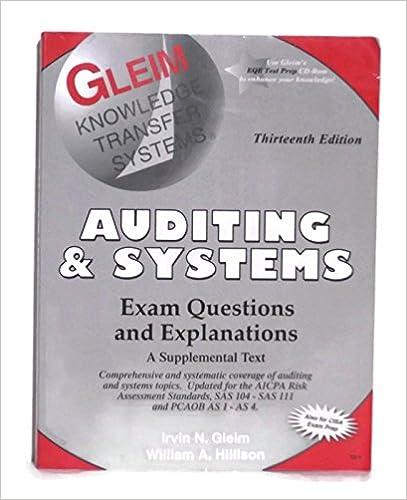DURA wishes to spend $9 million dollars to research a set of exploratory drugs. The initial research program will last 3 years, followed by 1 year field trials (the field trials will cost $2M). Upon completion of the field trials technological feasibility will be determined. Due to the fast changing nature of the drug industry, the successful drugs emerging from this process are expected to generate revenue for no more than 3 years after their initial introduction. Dura is considering the following approaches for conducting this research endeavor. 1. In-House: Dura will conduct this research in-house and funds it by issuing $6 million dollars in equity and funding the remaining $3 million internally. 2.Shell: Dura organizes Spell company to fund the research. Dura invests $3,000,000 in Spell and outside investors contribute capital of $9,000,000. While Dura controls Spell, it is Spell company that employs Dura to perform the drug research (Dura expends $3 million per year in this effort, and Spell pays Dura 54 million/year for performing the research). Upon completion of the research effort ownership of the in- process drug knowledge, patents and rights will belong to Spell. Dura plans or reacquiring the 75% of Spell it does not own for $9,000,000 at the start of year 4. (In actuality there would be return to capital issues to the outside investors, but we are ignoring these for simplicity. They basically would come into play under both alternatives with similar consequences.) Overall, the life of this research effort is 7 years, 3 years of initial development, 1 year of trials, and 3 years of sales QUESTIONS (Hint: The LAW holds here. The total net impact of each option should amount to $11M of expense, the cost of performing the R&D research over years 1-4.) Ignoring any revenue earned from the sale of drugs developed from the project, what is the income impact on Dura if it employs the In-House option (bolded numbers are hints): Year 1 2 3 4 Years 5-7 Total R&D Exp $11M Again ignoring any revenue earned from the sale of drugs, what is the income impact by year on Dura if it employs the Spell option assuming that year 1 is 2001: Year 1 2 3 4 Years 5-7 Total Income from Spell Work SOM # % & 2 3 5 6 7 8 $11M R&D Exp. Again ignoring any revenue earned from the sale of drugs, what is the income impact by year on Dura if it employs the Spell option assuming that year 1 is 2001: Year 1 2 3 4 Total Years 5-7 $OM Income from Spell Work R&D Exp./writeoffs $3M $11M Net Expense (INCOME) Finally, what is the income impact by year if Dura employs the Spell option assuming that year 1 is 2011, under which the new rules regarding acquired in acquisition in process R&D hold: Year 1 2 3 4 Years 5-7 Total Income from Spell Work R&D Exp./writeoffs Net Expense (Income) DURA wishes to spend $9 million dollars to research a set of exploratory drugs. The initial research program will last 3 years, followed by 1 year field trials (the field trials will cost $2M). Upon completion of the field trials technological feasibility will be determined. Due to the fast changing nature of the drug industry, the successful drugs emerging from this process are expected to generate revenue for no more than 3 years after their initial introduction. Dura is considering the following approaches for conducting this research endeavor. 1. In-House: Dura will conduct this research in-house and funds it by issuing $6 million dollars in equity and funding the remaining $3 million internally. 2.Shell: Dura organizes Spell company to fund the research. Dura invests $3,000,000 in Spell and outside investors contribute capital of $9,000,000. While Dura controls Spell, it is Spell company that employs Dura to perform the drug research (Dura expends $3 million per year in this effort, and Spell pays Dura 54 million/year for performing the research). Upon completion of the research effort ownership of the in- process drug knowledge, patents and rights will belong to Spell. Dura plans or reacquiring the 75% of Spell it does not own for $9,000,000 at the start of year 4. (In actuality there would be return to capital issues to the outside investors, but we are ignoring these for simplicity. They basically would come into play under both alternatives with similar consequences.) Overall, the life of this research effort is 7 years, 3 years of initial development, 1 year of trials, and 3 years of sales QUESTIONS (Hint: The LAW holds here. The total net impact of each option should amount to $11M of expense, the cost of performing the R&D research over years 1-4.) Ignoring any revenue earned from the sale of drugs developed from the project, what is the income impact on Dura if it employs the In-House option (bolded numbers are hints): Year 1 2 3 4 Years 5-7 Total R&D Exp $11M Again ignoring any revenue earned from the sale of drugs, what is the income impact by year on Dura if it employs the Spell option assuming that year 1 is 2001: Year 1 2 3 4 Years 5-7 Total Income from Spell Work SOM # % & 2 3 5 6 7 8 $11M R&D Exp. Again ignoring any revenue earned from the sale of drugs, what is the income impact by year on Dura if it employs the Spell option assuming that year 1 is 2001: Year 1 2 3 4 Total Years 5-7 $OM Income from Spell Work R&D Exp./writeoffs $3M $11M Net Expense (INCOME) Finally, what is the income impact by year if Dura employs the Spell option assuming that year 1 is 2011, under which the new rules regarding acquired in acquisition in process R&D hold: Year 1 2 3 4 Years 5-7 Total Income from Spell Work R&D Exp./writeoffs Net Expense (Income)








